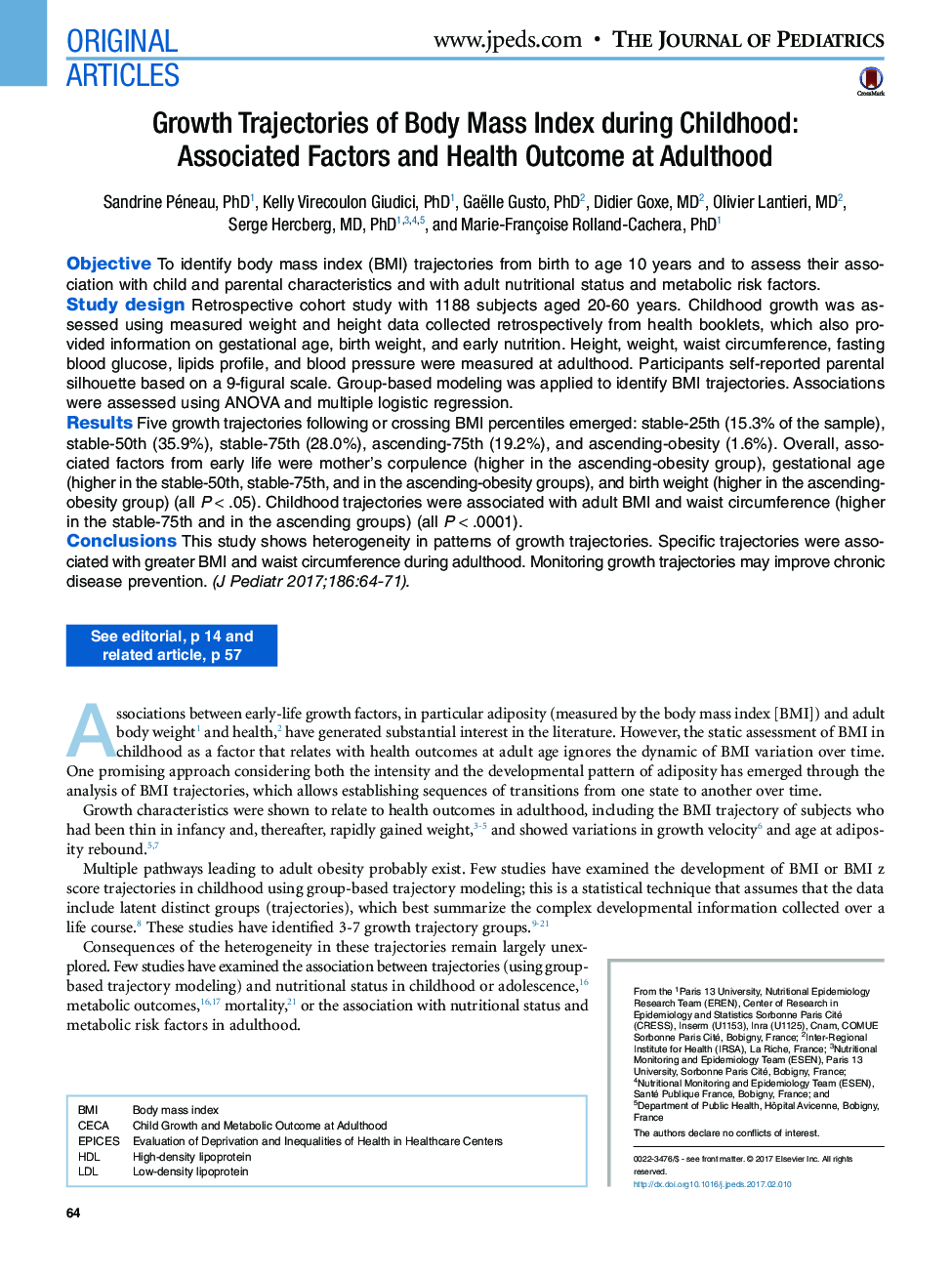| Article ID | Journal | Published Year | Pages | File Type |
|---|---|---|---|---|
| 5719440 | The Journal of Pediatrics | 2017 | 9 Pages |
ObjectiveTo identify body mass index (BMI) trajectories from birth to age 10 years and to assess their association with child and parental characteristics and with adult nutritional status and metabolic risk factors.Study designRetrospective cohort study with 1188 subjects aged 20-60 years. Childhood growth was assessed using measured weight and height data collected retrospectively from health booklets, which also provided information on gestational age, birth weight, and early nutrition. Height, weight, waist circumference, fasting blood glucose, lipids profile, and blood pressure were measured at adulthood. Participants self-reported parental silhouette based on a 9-figural scale. Group-based modeling was applied to identify BMI trajectories. Associations were assessed using ANOVA and multiple logistic regression.ResultsFive growth trajectories following or crossing BMI percentiles emerged: stable-25th (15.3% of the sample), stable-50th (35.9%), stable-75th (28.0%), ascending-75th (19.2%), and ascending-obesity (1.6%). Overall, associated factors from early life were mother's corpulence (higher in the ascending-obesity group), gestational age (higher in the stable-50th, stable-75th, and in the ascending-obesity groups), and birth weight (higher in the ascending-obesity group) (all Pâ<â.05). Childhood trajectories were associated with adult BMI and waist circumference (higher in the stable-75th and in the ascending groups) (all Pâ<â.0001).ConclusionsThis study shows heterogeneity in patterns of growth trajectories. Specific trajectories were associated with greater BMI and waist circumference during adulthood. Monitoring growth trajectories may improve chronic disease prevention.
